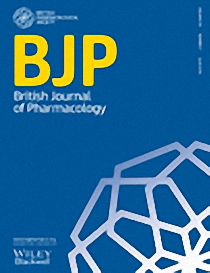All AbMole products are for research use only, cannot be used for human consumption.

VX-809 is a CFTR modulator with EC50 of 0.1 μM. VX-809 increases chloride secretions by 14% in human bronchial epithelial cells. Unlike VX-770, VX-809 is not a CFTR potentiator, as acute addition of VX-809 has no effect on F508del-CFTR function. VX-809 has been shown to correct the folding and processing of CFTR in F508del mutation cells in vitro. Pharmacodynamic data showed that VX-809 improved CFTR function in at least one organ (sweat gland). VX-809 reduced elevated sweat chloride values in a dose-dependent manner (p=0.0013) that was statistically significant in the 100 and 200 mg dose groups. VX-809 was more efficacious and selective for CFTR than previously reported CFTR correctors. VX-809 is currently in a phase II study alone and in combination with VX-770 in cystic fibrosis (CF) patients with the F508del-CFTR mutation.

Br J Pharmacol. 2016 Feb 19.
New use for an Old drug: COX-independent anti-inflammatory effects of sulindac in CF models.
VX-809 purchased from AbMole
| Cell Experiment | |
|---|---|
| Cell lines | FRT, HEK-293 and HBE cells |
| Preparation method | CFTR Immunoblot Analysis. FRT, HEK-293, or HBE cells expressing CFTR or F508del-CFTR were incubated for 24 h at 37 °C with or without VX-809 in the assay media. After incubation, cells were harvested in ice-cold D-PBS solution (without calcium and magnesium) and pelleted at 1,000 × g at 4 °C. Cell pellets were lysed in 1% Nonidet P-40, 0.5% sodium deoxycholate, 200 mM NaCl, 10 mM Tris, pH 7.8, and 1 mM EDTA plus protease inhibitor mixture (M5293) for 30 min on ice. Lysates were spun for 10 min at 10,000 × g at 4 °C to pellet nuclei and insoluble material. Approximately 12 μg total protein was heated in Laemmli buffer with 5% β mercaptoethanol at 37 °C for 5 min and loaded onto a 3% to 8% Tris-acetate gel. The gel was transferred to nitrocellulose and processed for Western blotting by using monoclonal CFTR antibody 769 or polyclonal to GAPDH. Blots were developed by enhanced chemiluminescence. Quantification of the relative amounts of bands C and GAPDH was performed by using NIH ImageJ analysis of scanned films. |
| Concentrations | 0~100μM |
| Incubation time | 48 h |
| Animal Experiment | |
|---|---|
| Animal models | Male Sprague–Dawley rats model |
| Formulation | 0.5% Tween80/0.5% methylcellulose/water |
| Dosages | 1 mg/kg |
| Administration | orally |
| Molecular Weight | 452.41 |
| Formula | C24H18F2N2O5 |
| CAS Number | 936727-05-8 |
| Solubility (25°C) | DMSO 60 mg/mL |
| Storage |
Powder -20°C 3 years ; 4°C 2 years In solvent -80°C 6 months ; -20°C 1 month |
| Related CFTR Products |
|---|
| GLPG2737
GLPG2737 is a potent CFTR type 2 corrector, and GLPG2737 can be used in combination with a type 1 co-corrector in the study of cystic fibrosis. |
| NJH-2-057
NJH-2-057 is an EN523 OTUB1 recruiter linked to lumacaftor, a agent used to treat cystic fibrosis that binds ΔF508-CFTR. |
| GLPG2737
GLPG2737 is a novel potent Type 2 corrector of CFTR. GLPG2737 showed high permeability both in MDCKII-MDRI and Caco-2 cells, with low efflux allowing an elevated absorbed fraction FaxFg and a dose proportional increase in exposure in rat from a dose of 5 to 300 mg/kg, despite a low aqueous thermodynamic solubility. |
| UCCF-853
UCCF-853 is a cystic fibrosis transmembrane regulatory protein (CFTR) modulator. |
| (R)-Posenacaftor sodium
(R)-Posenacaftor sodium is the R-enantiomer of Posenacaftor and a cystic fibrosis transmembrane regulatory protein (CFTR) modulator that corrects the folding and transport of CFTR proteins.Posenacaftor is used in studies related to cystic fibrosis (CF). |
All AbMole products are for research use only, cannot be used for human consumption or veterinary use. We do not provide products or services to individuals. Please comply with the intended use and do not use AbMole products for any other purpose.


Products are for research use only. Not for human use. We do not sell to patients.
© Copyright 2010-2024 AbMole BioScience. All Rights Reserved.
